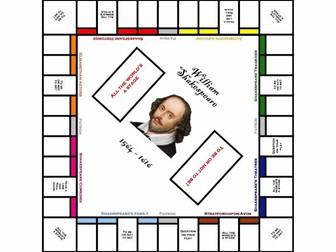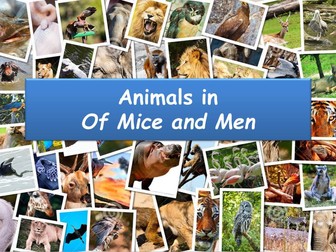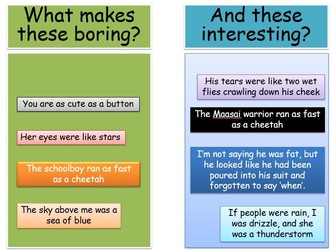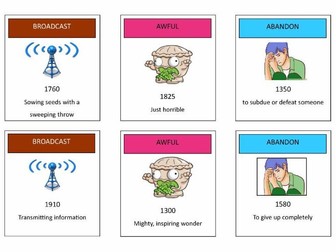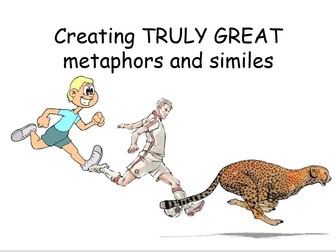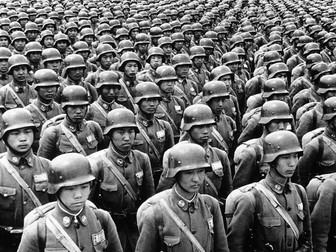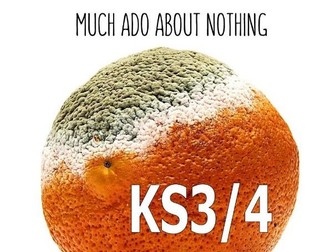"Shakeopoly" - teach Shakespeare context easily with this board game
This is a Monopoly-style board game aimed at teaching KS3 and KS4 about Shakespeare's life, times, works and general context. It will get them asking (and answering) lots of questions, and will lead to increased knowledge of:<br />
<br />
Shakespeare's home life and family;<br />
His theatres, colleagues and patrons;<br />
The different genres of play he wrote;<br />
Some key quotations.<br />
<br />
The set works just like Monopoly but without the money. It includes PDFs of a board, property cards, the equivalents of Chance and Community Chest, and some trivia questions in place of income tax. I've added a guide lesson plan (which includes how to play the game).<br />
<br />
The 'property cards' instead of being areas of London are aspects of Shakespeare's life and works<br />
<br />
There are also four squares on the board that allow you to make it specific to a particular play if needed. I have added some questions on Richard III to show how this works.
